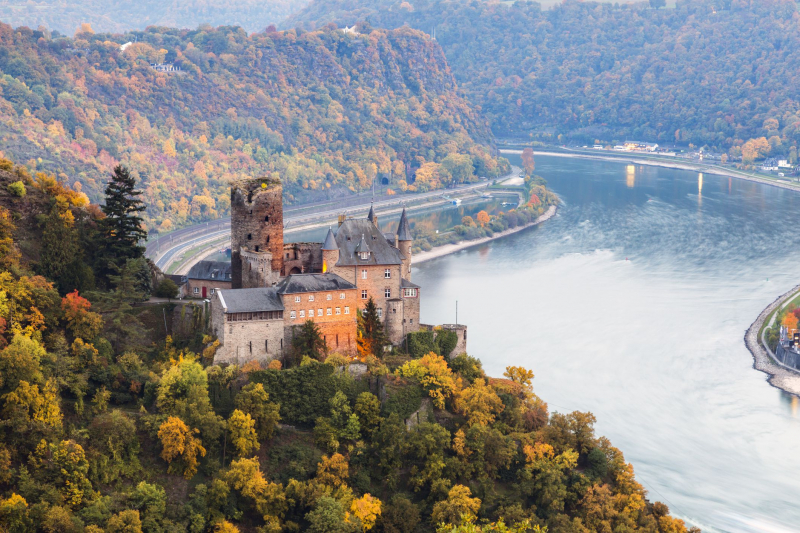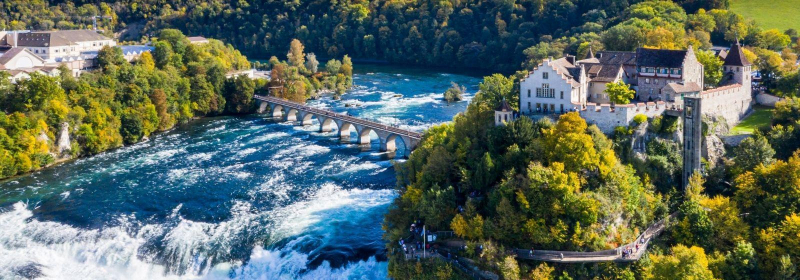Rhine

The Rhine is one of Europe's major rivers. The river starts in the Swiss canton of Graubünden in the southeastern Swiss Alps, passes across the Swiss-Liechtenstein, Swiss-Austrian, Swiss-German, and then Franco-German borders, then flows largely north through the German Rhineland and the Netherlands until emptying into the North Sea. With a length of around 1,230 km (760 mi) and an average discharge of about 2,900 m3/s (100,000 cu ft/s), it is the second-longest river in Central and Western Europe (after the Danube).
The Rhine and the Danube formed a large part of the Roman Empire's northern inland border, and the Rhine has long been a major navigable waterway for moving trade and supplies deep inland. The various castles and defenses built along it attest to its prominence as a waterway in the Holy Roman Empire.
The Rhine flows through Arnhem, Nijmegen, Utrecht, and Rotterdam, among other cities in the Netherlands. The Rhine is divided into four sections: the Lower Rhine, the Middle Rhine (which runs through Germany), the Upper Rhine (which runs through Basel), and the High Rhine (which runs into Lake Constance). The Rhine is the main source of domestic water for most of the cities it passes through. The Rhine's waters have been used for agriculture in the Netherlands. It also serves as a vital border between Switzerland, Germany, Liechtenstein, and France, as well as a vital transportation corridor for all six countries.
Length: 1230 km (760 mi)









